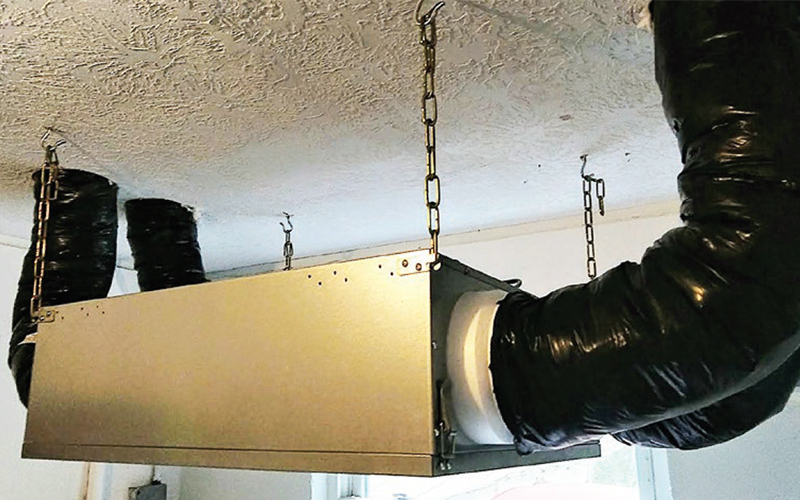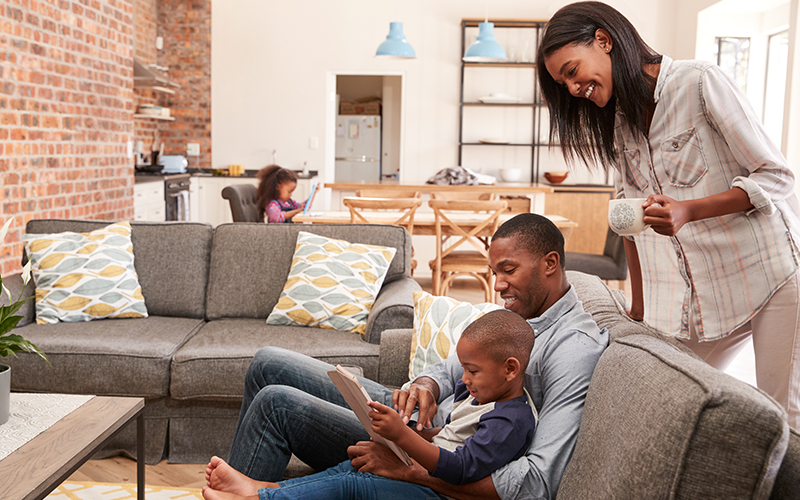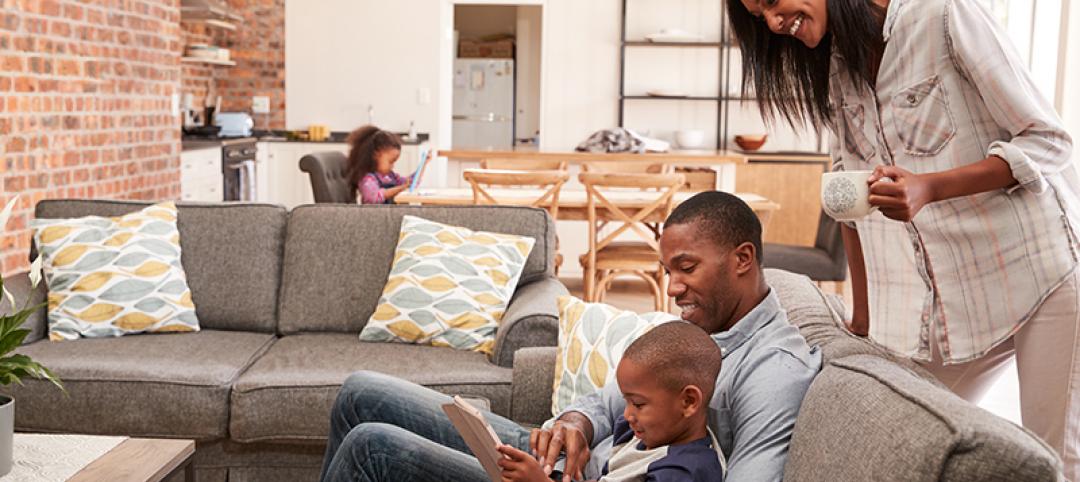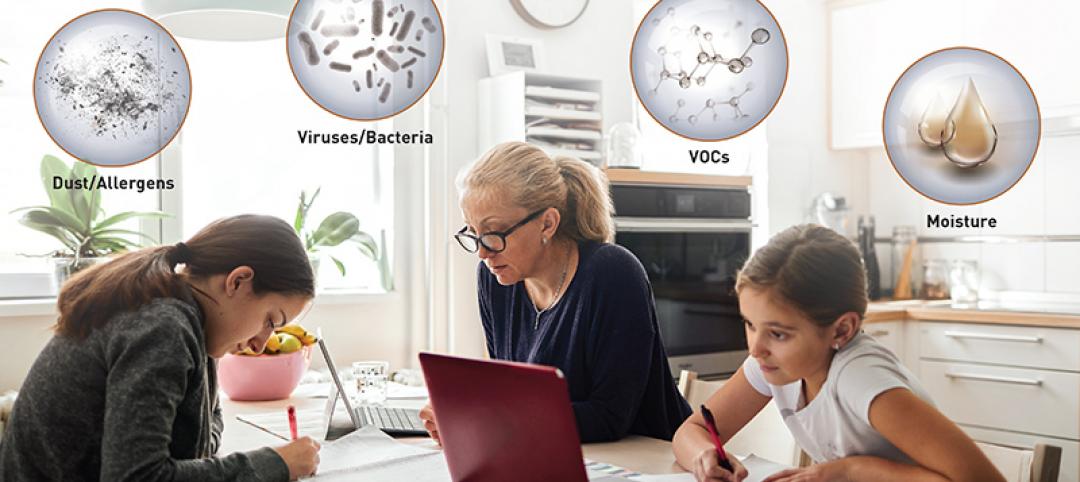Increased public awareness of the hazards posed by indoor pollutants has raised tenant expectations for healthy indoor air. In response, builders, owners and managers of multi-family housing are installing healthy air systems for individual units as a means of both attracting and retaining tenants and warding off potential liability.
Tenants demand healthy air
Americans are spending more time indoors than ever—over 90% according to one EPA-funded study— and the recent pandemic has only pushed those numbers higher. That makes indoor air quality (IAQ) more important than ever, especially given the fact that indoor air can be 2-5 times more polluted than outdoor air. Tighter building envelopes, while certainly more energy efficient, only compound the problem as they leave airborne toxins without an escape route. Common indoor pollutants include mold, pet dander, volatile organic compounds (VOCs), viruses and bacteria.
The public has taken notice evidenced by a recent study conducted by the Shelton Group which found that 64% of Americans are concerned about indoor air quality, and nearly a fifth say they’re more concerned today than before the pandemic. Accordingly, tenants have begun to expect some sort of healthy air system that goes beyond bathroom fans and range hoods.
What’s lurking next door?
Apartment residents are becoming increasingly concerned about proximity to neighboring units and the possibility of contaminated air flowing from one unit to another. The potential for the coronavirus to spread in this manner is obviously the elephant in the room. Russell Pope, industry development manager for Panasonic Life Solutions Company of America and chairman of the Home Ventilation Institute has this to say. “The fact that there is still scientific uncertainty over whether COVID-19 is transmissible in the air has done little to alleviate residents’ distress in apartments. This trend has been brewing for a couple of years, but the recent pandemic has heightened awareness about indoor air quality, and driven residents’ concerns to peak levels. Multi-family residents are especially apprehensive due to their close proximity to others and the space they share.”
 Newer ERVs feature flexible installation options including ceiling or wall mount using cleat hanger bars.
Newer ERVs feature flexible installation options including ceiling or wall mount using cleat hanger bars.
Liability
One area of concern for builders and owners involves legal liability. According to the EPA, “multi-family buildings pose unique indoor air quality challenges because pollutants may move from unit to unit and residents have limited ability to make changes to the building structure itself.”
The bevy of lawsuits from workers who claim to have been infected with COVID-19 at work has only heightened anxiety all around. And while widespread litigation from tenants has yet to materialize, plaintiffs’ attorneys have already explored the prospect of such suits, according to Texas-based national law firm, Thompson Coe.
ERVs — change is in the air
In response, builders and owners are taking steps to protect their tenants from the effects of harmful air and by doing so, protect their investments and reputation as well. Installing energy recovery ventilators (ERVs) in individual units can not only satisfy code-mandated air changes per hour requirements, but also reduce heating and cooling costs compared to more basic exhaust or supply ventilation systems.
Newer ERVs allow occupants to boost airflow with the flick of a switch—ideal for temporary increases in occupancy such as birthday parties and holiday get-togethers. ERVs also offer a degree of flexibility for keeping an apartment supplied with fresh outdoor air as they can be installed as stand-alone units or integrated with an air handler. When investing in an ERV, it’s important to choose one that can accommodate either a MERV 8 or MERV 13 filter which evidence suggests have the ability to filter out viruses.
Healthy air = healthy bottom line
Installing healthy air systems is a win for builders and owners on multiple levels. A properly installed system ensures easy code compliance. On a more human level, an owner who goes the extra mile to help promote tenant health and safety engenders good will and increases the likelihood of longer lease terms and renewals. Owners reduce their liability and builders protect their reputation which can be lost in an instant via a punitive online review. In the end, good air is simply good business.
More from Author
Panasonic | Jan 27, 2021
Healthy air systems protect builders and owners
Multi-family builders and owners are simultaneously addressing the healthy air demands of tenants and warding off potential liabilities and loss of revenue.
Panasonic | Nov 17, 2020
Panasonic’s new WhisperWarm DC promises more strategic, top-to-bottom heating
The latest generation fan/heat solution from Panasonic not only features more powerful heat, but also a unique method of directing it to where it provides the most comfort.
Panasonic | Aug 26, 2020
Healthy air systems have become the new “standard equipment.”
As home buyers demand healthy air systems, builders look to differentiate themselves with a “Healthy Home Builder” designation.









